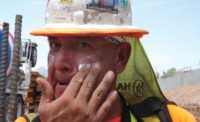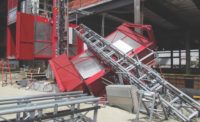DaBaldo, though, maintains in his lawsuit that he didn’t read those reports relating to his earliest chest X-rays. Further, the state court’s ruling barring the lawsuit was based on “disease confusion,” the DaBaldo’s appeal states. Delaware is a multi-disease jurisdiction, meaning each disease caused by asbestos exposure is subject to its own statute of limitations.
Because he was diagnosed only with pleural disease in 1992 and had no knowledge or reason to suspect he also had asbestosis until 2007, the DaBaldos’ claim shouldn’t be time-barred, they argued in their appeal.
A spokesman for URS declined to comment on the case.
After decades of illness and lawsuits, asbestos-related litigation still fills courtrooms.The murky nature of exposure and long latency of disease also have helped make asbestos one of the most controversial sources of personal-injury claims, putting billions in the pockets of attorneys.
The amount of the average claim settled rose 75% from 2001 to 2010, according to NERA Economic Consulting. The number of new claims filed each year has stabilized at 52,000, with the total since 1982 expected to reach one million. The total number of defendants is about 10,000, according statistics gathered on a website maintained by The Peterson Firm, plaintiff's attorneys.
Asbestos is the “longest-running mass tort litigation in U.S. history,” according to the U.S. Chamber of Commerce, which has worked to try to limit asbestos claims.
The sheer volume of claims and, in some states, the system for managing them encourage a “culture of settlement” as the only way the defendant companies can cope, according to a recent report by the Chamber’s Institute for Legal Reform.
Efforts To Limit Lawsuits
During the Bush administration, elected officials and corporations tried to limit the ability to sue. One legal journal titled an article, “Asbestos Litigation Gone Mad: Exposure-Based Recovery for Increased Risk, Mental Distress and Medical Monitoring.”
The plaintiffs’ ranks have changed over the years and now include more home-repair exposures.
How many craft workers in the U.S. have been exposed to the material remains unclear.
Nor is it clear how long the aging workers have to make claims.
Advocates for victims, such as Fryncko, can see both the workers’ and the companies’ sides of the issue. Statutes of limitations exist to protect firms from unnecessary fears, Fryncko says.
Diane Blackburn, a Pittsburgh-area resident and radiation therapist who lost her father, union plumber Dale Blackburn, to mesothelioma in 2005, isn’t overly disturbed about discovery laws. She's more worried about the ignorance of many workers who labor every day around asbestos.
“What angers you is when you talk to workers who don’t recognize what asbestos looks like,” says Blackburn. She runs an outreach program called Dale Blackburn Asbestos Disease Awareness.





Post a comment to this article
Report Abusive Comment